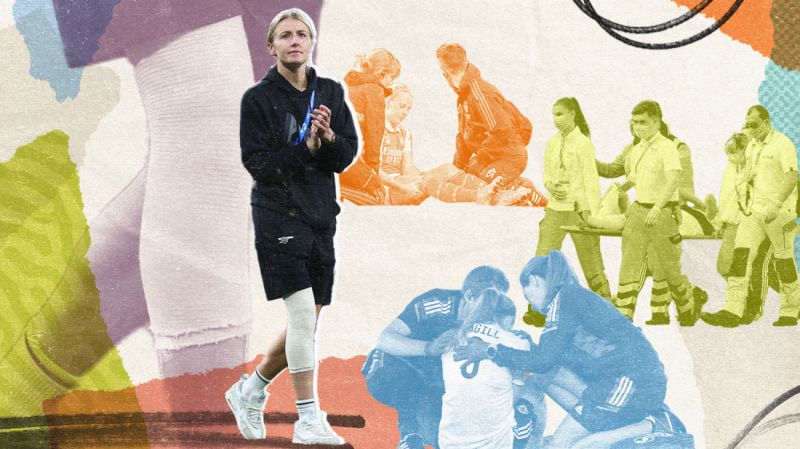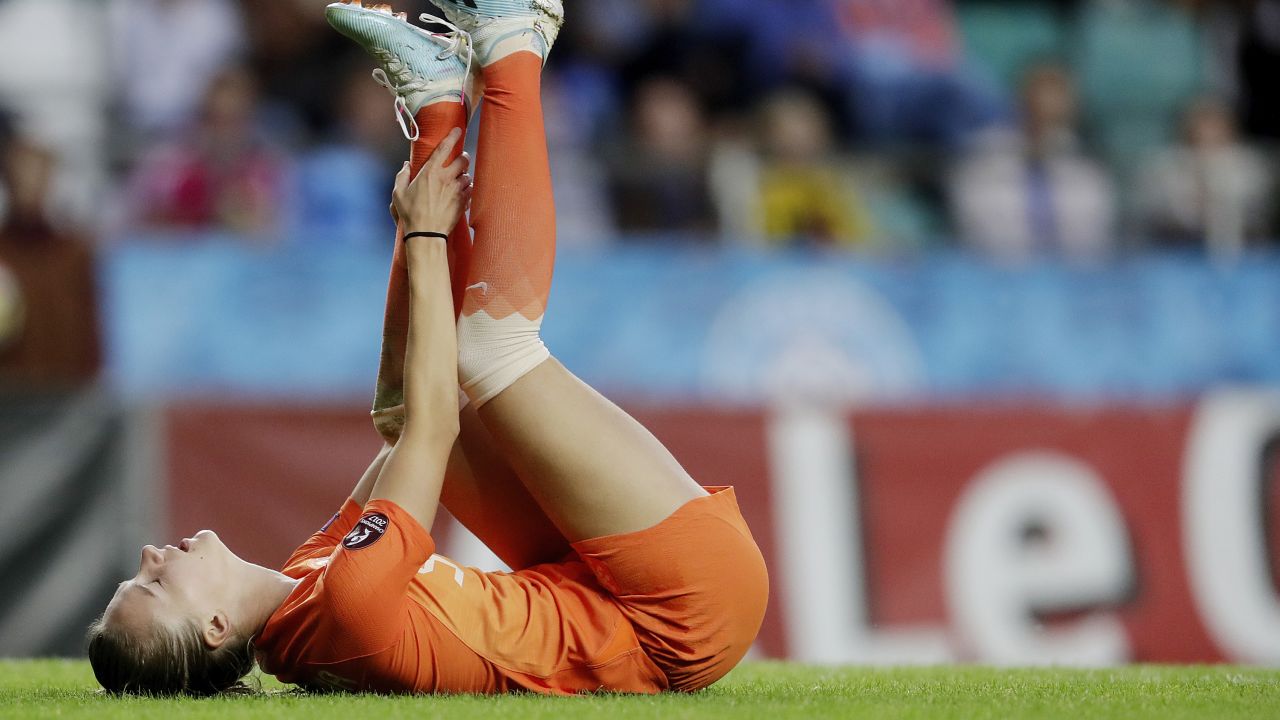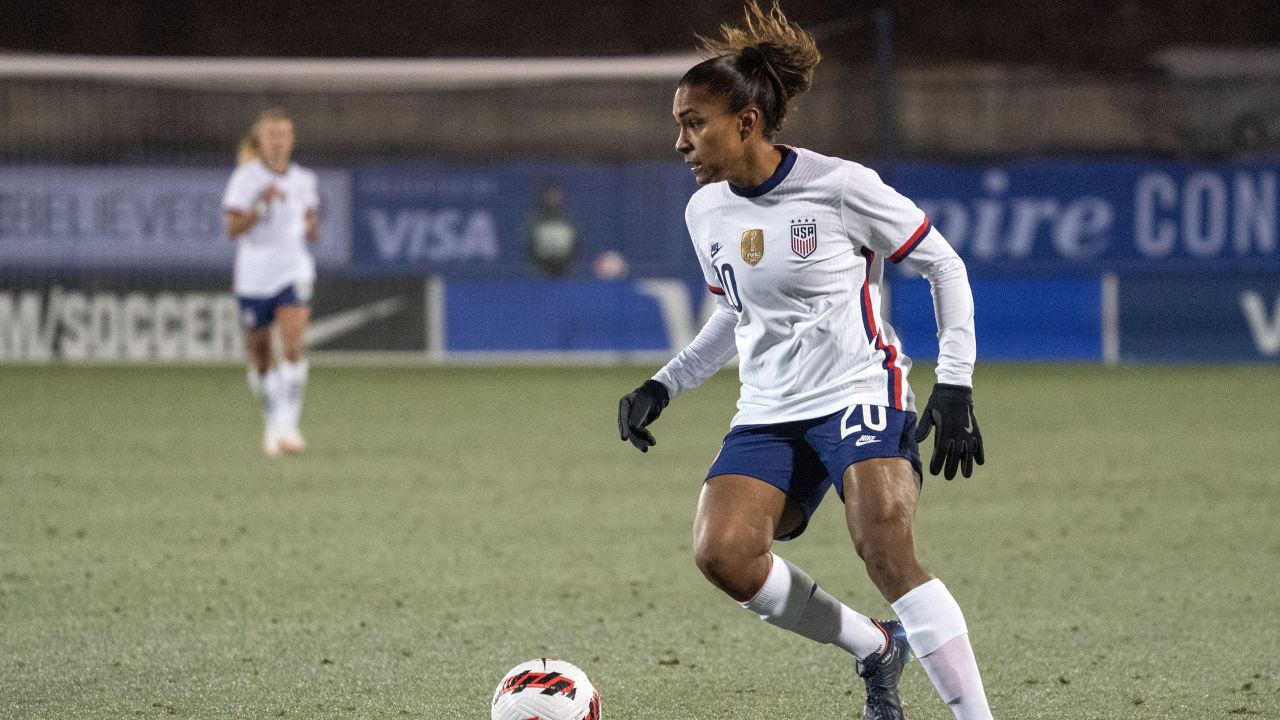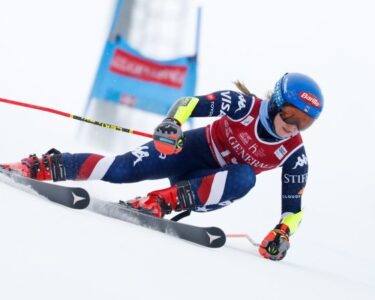CNN
—
In 2022, Simone Magill arrived at the Women’s Euros with Northern Ireland full of hope. Here she was, representing her tiny nation in one of world soccer’s biggest tournaments.
But during the team’s opening match against Norway, disaster struck. Magill went down in agony and Northern Ireland fans held their breaths. She had suffered a dreaded anterior cruciate ligament (ACL) injury.
“I knew what it was right away,” Magill told CNN Sport. “It was devastating.
“There were a million thoughts going through my head when it happened. I was thinking about how long I’d be out for, how long the recovery would take, about needing surgery, and there were lots of tears.”
Magill wasn’t the only player to have her tournament ruined by the devastating knee injury. Fast-forward to the upcoming Women’s World Cup, which starts on July 20 in Australia and New Zealand, and a host of the game’s best players will also be absent because of an injury which appears to be endemic in the women’s game.
England captain Leah Williamson, the Netherlands’ all-time leading women’s scorer Vivianne Miedema and England’s Euro 2022 top scorer Beth Mead will all miss the biggest international competition in the women’s game.
Cat Macario, a rising star for the US Women’s National Team (USWNT), is also out, as is Germany’s Giulia Gwinn, named the Best Young Player at the 2019 Women’s World Cup, and Switzerland’s teenage midfielder Iman Beney – ruled out a day after being called up to the national team.
During the 2022/23 season, so many female soccer players across Europe’s top leagues suffered ACL injuries that an entire starting XI could be made up of those individuals. But why are so many female soccer players suffering from the same injury?
What is the ACL?
The ACL is one of the key ligaments inside the knee. It joins the thigh bone to the shin bone and keeps the knee stable. It also prevents the thigh and shin bones from moving out of place. It most often can be injured by quickly changing direction at high speed – a typical action for many athletes in soccer, football and basketball, among other sports.
Tearing an ACL is one of the most serious injuries an athlete can endure. The best option for repairing an ACL rupture is to have surgery and, after that, it takes between six and 12 months to return to full activity – often ruling soccer players out for entire seasons.

Sarah Milner, a specialist musculoskeletal sports and rehab physiotherapist, says that, if a professional athlete doesn’t have surgery for an ACL tear, they “essentially won’t have a career anymore.”
According to a study published in the peer-reviewed British Journal of Sports Medicine, females are three to six times more likely to experience an ACL injury compared with males.
Another study published by the medical journal Arthroscopy estimates that women’s soccer and basketball players are three times more likely to tear their ACL than their male counterparts.
Of the 20 nominees for the 2022 Ballon d’Or Féminin – the highest individual honor for soccer players – 25% suffered an ACL injury in the same year.
But of the 30 nominees for the 2022 men’s Ballon d’Or, none had sustained an ACL injury that year.
Why are female soccer players at a higher risk than their male counterparts? A number of academics, players and soccer medical experts have identified a common theme: a lack of sufficient funding for the women’s game.
Several factors cited by the experts and players CNN Sport spoke to are controllable and, while ACL injuries are always bound to occur in soccer, there is a consensus among advocates for the women’s game that the rate at which they are being sustained doesn’t have to be so high.
Dr Katrine Okholm Kryger is a senior lecturer in sports rehabilitation at St Mary’s University in Twickenham, London. She said many observations around ACL injuries among female players are often centered around “nature and nurture.” Nature, in this case, refers to the anatomy and biomechanics of women. Kryger thought too much blame had been placed on this factor.
“A common argument is that women’s menstrual cycle leads to fluctuating hormones, which makes them more physically unstable when playing,” Kryger said. “But research shows that there may be a slightly higher risk of injury during the ovulation period but that risk is really very minor.
<div data-uri="cms.cnn.com/_components/video-resource/instances/clk81o5gw000c3b6i0nxjhim5@published" data-component-name="video-resource" data-editable="settings" class="video-resource" data-video-id="sports/2023/07/13/vivianne-miedema-acl-injuries-womens-soccer-spt-intl.cnn" data-live="" data-analytics-aggregate-events="true" data-custom-experience="" data-asset-type="hlsTs" data-medium-env="prod" data-autostart="unmuted" data-show-ads="true" data-source="CNN" data-featured-video="true" data-headline="Dutch star Vivianne Miedema calls on FIFA to help curb ACL injury crisis" data-description="When the Women's World Cup kicks off in Australia and New Zealand, the sport will be missing several of the game's superstars due to ACL injuries. Arsenal star Vivianne Miedema spoke to CNN Sport's Christina Macfarlane about the issue." data-duration="04:40" data-source-html='<span class="video-resource__source"> – Source:
<a href="https://www.cnn.com/" class="video-resource__source-url">CNN</a>
</span>' data-fave-thumbnails='{"big": { "uri": "https://media.cnn.com/api/v1/images/stellar/prod/230713113108-vvianne-miedema-intv.jpg?c=16×9&q=h_540,w_960,c_fill" }, "small": { "uri": "https://media.cnn.com/api/v1/images/stellar/prod/230713113108-vvianne-miedema-intv.jpg?c=16×9&q=h_540,w_960,c_fill" } }' data-vr-video="false" data-show-html="” data-check-event-based-preview=”” data-network-id=”” data-details=””>
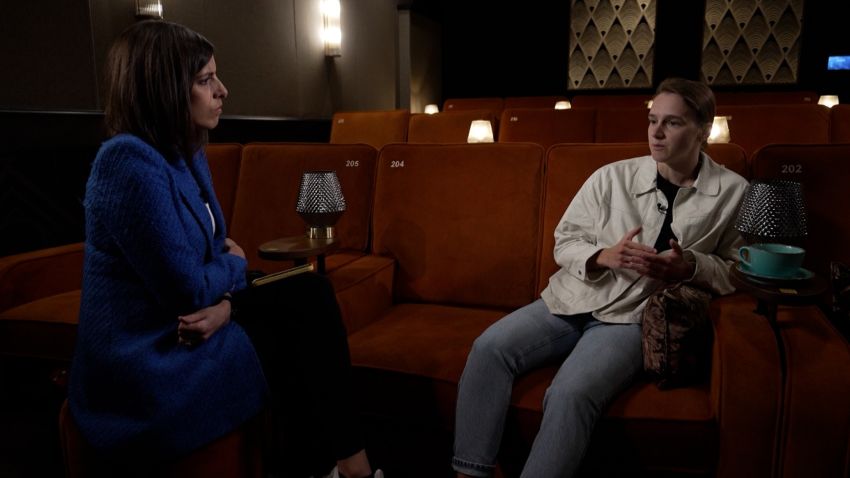
04:40
– Source:
CNN
“Also, if you’re on any hormonal contraception, that risk should be leveled out and many women players are on hormonal contraception, so it’s difficult to imagine that the menstrual cycle factor is the driving cause behind ACL injuries.”
Kryger also had reservations about the argument that uses the way women’s bodies are built as a cause.
“Women, on average, have wider hips than men [which increases angulation at the knee and makes ACL ruptures more likely] and that’s been used to claim that women aren’t ‘designed to play football,’” Kryger told CNN.
“I don’t think anyone is ‘designed’ to play the game, so I really want to break down those philosophies that imply women are too ‘weak’ or too ‘physically unstable’ to play.”
According to Kryger, the key factors behind the disparity in rates of ACL tears between women and men in soccer are not only controllable, but also gendered.
‘It doesn’t have to happen’
“Women have just never been a priority in the sport,” Kryger said. “At elite clubs in the men’s game, players have access to exceptional academies and training facilities from a very young age.
“They are able to start work with excellent strength and conditioning coaches even as early teenagers and, by the time they are playing as adult professionals, they’ve been able to build up a huge amount of physical resilience – which is key in lowering the likelihood of an ACL rupture.
“But, in the women’s game, the youth academies are nowhere near as professionalized or developed in the way that the men’s are. Many women’s clubs, especially if they aren’t the top ones in the Women’s Super League [in England], for example, do not have access to the best training grounds and resources from a young age in the way that elite male players do.”
Indeed, players at the top of the men’s game have usually been able to commit completely to soccer even before their teenage years – youth contracts for academy players ensure that they can focus fully on the sport.
But, as Kryger argued, the professionalization of women’s soccer is relatively recent compared to the men’s game and there is far less funding for women’s academies.
The career of Manchester United forward Rachel Williams, who damaged her ACL in 2018, serves as a perfect example of that disparity.
At 20 years old, the point at which the majority of male players are playing in a full-time professional capacity, Williams was working as a plasterer alongside appearing in the Women’s Super League.
According to a BBC interview, in the early days of the WSL (formed in 2011), Williams said she only trained twice a week and made her money from plastering, rather than playing soccer.
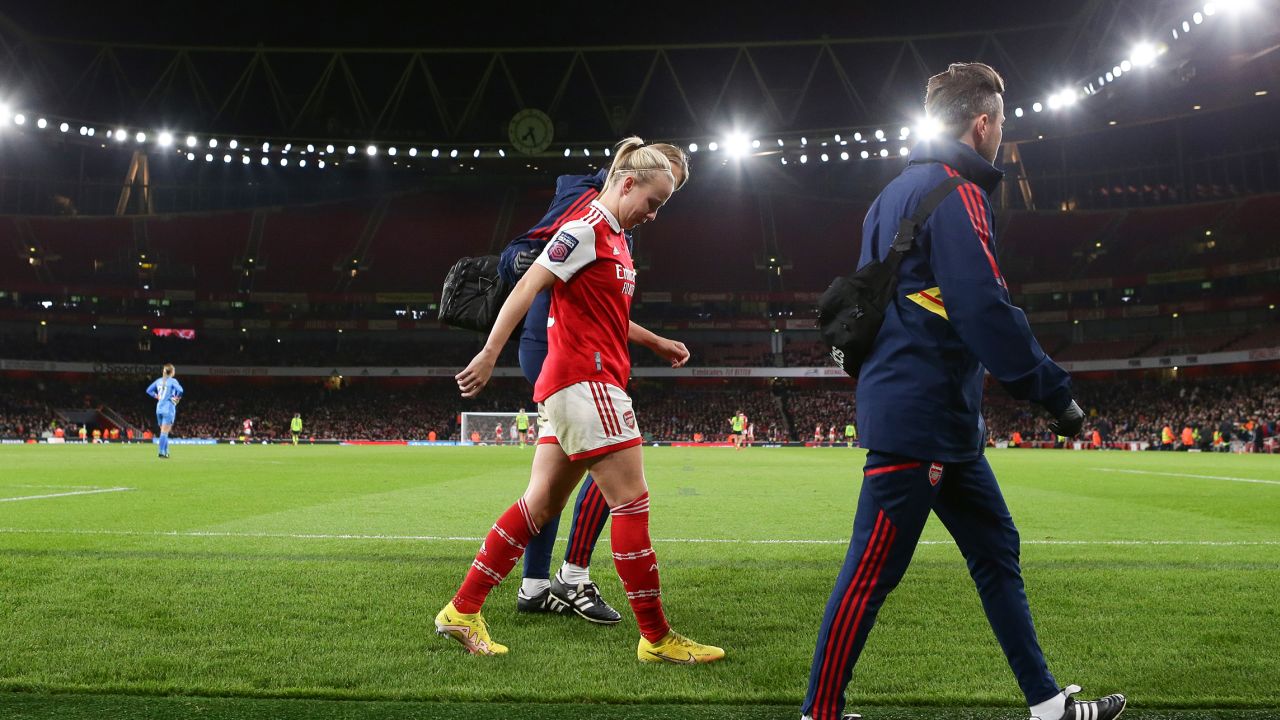
Kyrger said the lack of football shoes specifically designed for women has also contributed to ACL ruptures.
“Football boots, or cleats, are very tight-fitting – unlike running shoes. But the vast majority of them are designed to fit men’s feet, rather than women’s, despite the fact that women’s feet are different to men’s in several ways.”
According to an article in the Aspetar Sports Medicine Journal, co-authored by Kryger, footwear molds used by manufacturers designing cleats are based on “Caucasian male foot shapes” – but the adult female foot is on average smaller than the male foot and women “generally have a wider forefoot relative to their foot length, a greater ankle circumference and a different ankle shape.”
<div data-uri="cms.cnn.com/_components/video-resource/instances/clk81thql000p3b6ibdigjg1j@published" data-component-name="video-resource" data-editable="settings" class="video-resource" data-video-id="sports/2023/07/12/sarina-wiegman-acl-injuries-womens-world-cup-intl-spt.cnn" data-live="" data-analytics-aggregate-events="true" data-custom-experience="" data-asset-type="hlsTs" data-medium-env="prod" data-autostart="unmuted" data-show-ads="true" data-source="CNN" data-featured-video="true" data-headline=""Make the risk as low as possible,' says England women's coach Sarina Wiegman on ACL injuries" data-description="England women's coach Sarina Wiegman talks to CNN Sport's Amanda Davies about the spate of anterior cruciate ligament injuries in the lead up to the 2023 FIFA Women's World Cup." data-duration="03:15" data-source-html='<span class="video-resource__source"> – Source:
<a href="https://www.cnn.com/" class="video-resource__source-url">CNN</a>
</span>' data-fave-thumbnails='{"big": { "uri": "https://media.cnn.com/api/v1/images/stellar/prod/230712110931-weigman-interview-still.jpg?c=16×9&q=h_540,w_960,c_fill" }, "small": { "uri": "https://media.cnn.com/api/v1/images/stellar/prod/230712110931-weigman-interview-still.jpg?c=16×9&q=h_540,w_960,c_fill" } }' data-vr-video="false" data-show-html="” data-check-event-based-preview=”” data-network-id=”” data-details=””>
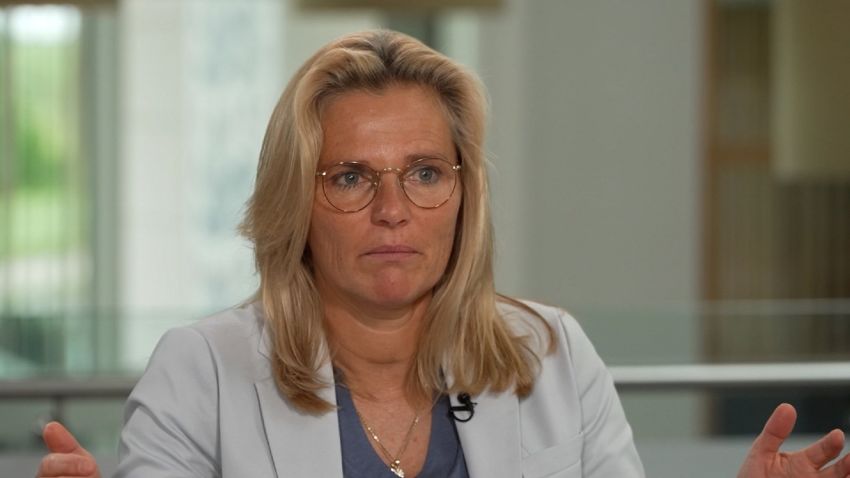
03:15
– Source:
CNN


